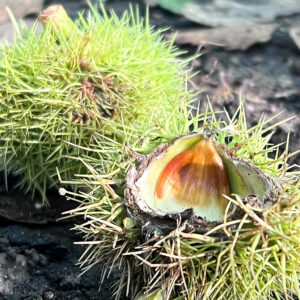
Sweetchestnuts
The parkland at NT Calke Abbey has many beautiful huge, old sweet chestnuts. Some have long, trailing branches that appear to prop it up like a drapey candelabra and this is quite possibly what they are doing.

The parkland at NT Calke Abbey has many beautiful huge, old sweet chestnuts. Some have long, trailing branches that appear to prop it up like a drapey candelabra and this is quite possibly what they are doing.

This bright blue firework of a flower is an eryngium (or sea holly) – a fabulous architectural plant. There are many different eryngiums mostly grown ornamentally and can be annual or perennial (this one is perennial), usually blue or white (the most well-known being ‘Miss Willmott’s Ghost’).

I touched on damselflies and dragonflies in my last post so thought I’d look into them a bit more today. Five ways to tell them apart: Bodies: damselfly’s long, thin and fragile looking; dragonfly’s are chunkier

I visited Weston Park for the first time this week for a heritage event – previously I’ve only got as far as The Granary restaurant. It’s a fabulous place so if you’re at a loose end this weekend and it’s good weather, I highly recommend it.

These seed pods belong to the plant honesty. It’s a lovely plant originally from central and southern europe which has been adopted by gardeners, mainly for these unusual seed pods. There are a few varieties but only two colours: purple or white.

There’s a country lane near the kids school that I often walk down which sings with the calls of a Yellowhammer. It’s a distinctive call and stands out against all others. It’s high pitched and seems that the bird is saying “little-bit-of-butter-no-cheeeeese!”

Before it’s too late, head off to your local public access bluebell woods – there’s nothing quite like them. Blue is an unusual colour in the flower world and to see these en masse is just stunning.

Despite the speeds involved, it’s remarkably difficult to photograph a travelling snail!
These chaps are not high on the gardeners list of welcome visitors but they do play an important role in our ecosystem

I always assumed that boxing hares were two males fighting for territory or females, but it’s more likely to be a female fighting off a male and this is where the term ‘mad as a March hare’ – for their propensity to box. March is midway through their mating season and the most likely time of year to see them out and about.

This slate wall along the coast path at Abereiddy in Pembrokeshire provides many sheltering crevices for plant seeds to take root and snails to overwinter. It always amazes me how nature can thrive let alone survive on a coastline that gets battered by the wind, rain and salt.